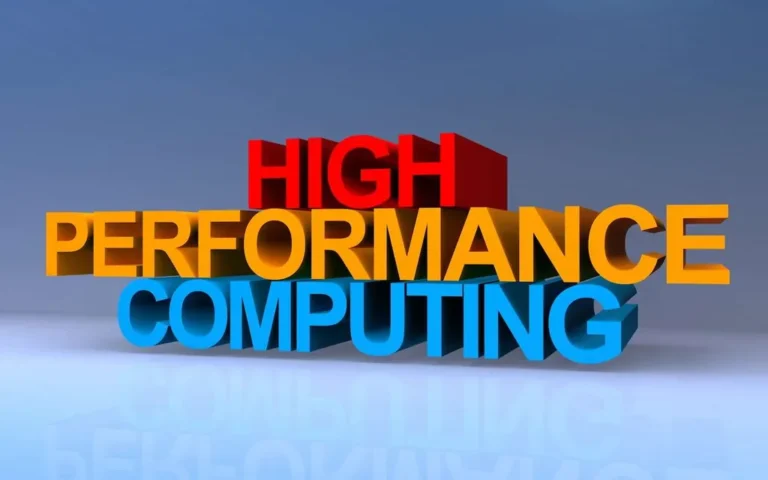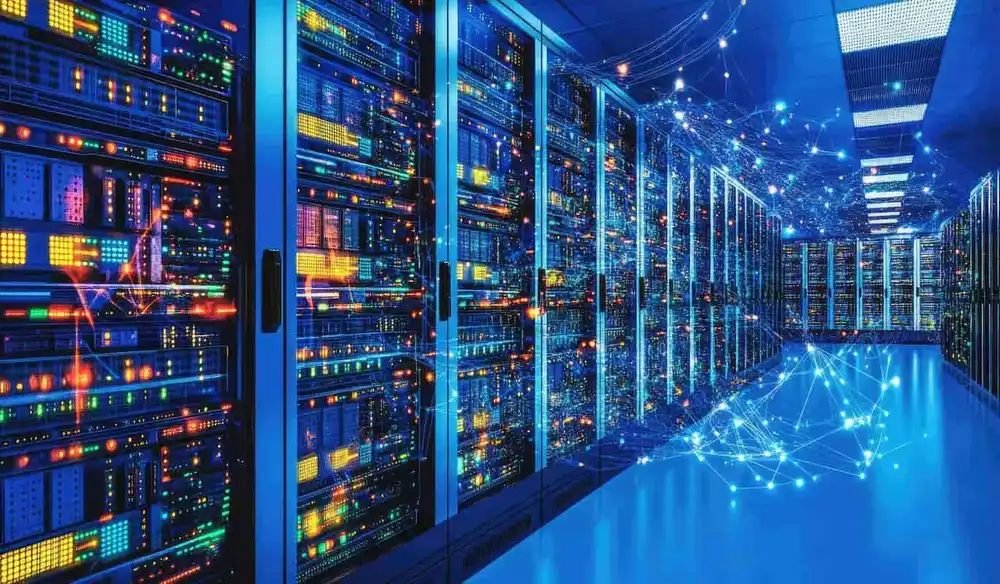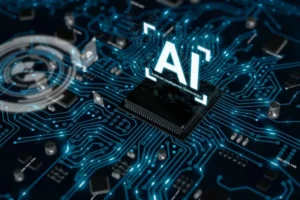The Primary Aspects of High Performance Computing (HPC)

The world is constantly generating more and more information. In 2021, its volumes on a global scale were 79 zettabytes, while by the end of 2025, it is predicted to be 181 zettabytes. Remember that one zettabyte contains 1 trillion gigabytes. Data growth affects the nature of computing and the number of crucial apps that rely on information increases. High performance computing (HPC) is vital to compile and examine these growing databases. It may be utilized for the benefit of people, firms, research centers, and government institutions. This blog post will analyze all aspects of HPC.
High Performance Computing Explained
First, we must define what is HPC. It is the practice of utilizing aggregated computing power to perform complex tasks lightning fast. Unlike standard PCs or servers, HPC systems connect multiple machines and storage units to function as a single, powerful entity. This approach enables organizations to process massive datasets, run intricate simulations, and solve advanced scientific and technical challenges that would be impossible or inefficient with conventional systems.
Previously, HPC relied on a central processing unit (CPU) to perform computation. CPUs were effective at general-purpose computing tasks but had problems interacting with highly parallel workloads. Modern computing often relies on a graphics processing unit (GPU) to prevent such difficulties. GPUs are created specifically to organize parallel processing and successfully cope with deep learning or complex modeling.

We are confident that we have what it takes to help you get your platform from the idea throughout design and development phases, all the way to successful deployment in a production environment!
Core Stages of HPC
HPC plays a vital role in solving challenging problems across science, engineering, finance, and beyond. Let’s consider the primary principles of HRC.
- Formation of clusters. An HPC cluster contains several PCs or nodes interconnected with a high speed network. Each element has a parent or several CPUs, memory, and repository.
- Job parallelization. The entire job volume is divided into minor objectives, the execution of which occurs in parallel on different machines.
- Database distribution. The information necessary to complete the job is distributed between the elements so each participant has a part of the information needed to address the issues.
- Calculations. High performance computing functionality is based on the Message Passing Interface (MPI), a common repository and parallel computer programming principles that enable the exchange of information between different elements of a cluster. Each machine performs its processes in parallel, and the outcomes are utilized throughout the system and integrated until the procedure is fully completed.
- Tracking. The cluster has exceptional functionality that monitors the efficiency of elements and tracks the correct distribution of processes and information. This ensures cluster computing is carried out efficiently and provides accurate outcomes.
- Result. The outcomes are based on the calculations performed by each cluster element. This output is typically stored in a secure file repository and rendered into pictures and other representations to facilitate analysis and interpretation.
Mixing the potential of multiple machines enables HPC to complete labor-intensive design, database processing, and other resource-intensive tasks much faster than utilizing one PC.
Primary Profits of HPC
For many years, high performance computing solutions have been utilized to organize exploration and test novel samples. They allow you to deal with complicated and considerable troubles faster and cheaper than standard computing. Let’s consider other benefits of such computing.
- Faster information processing. Speed is one of the key profits of distributed computing. Companies and researchers may process considerable volumes of information in a few seconds. This advantage is helpful for processes that require real-time results, including weather forecasting and financial market analysis.
- Decreased physical testing period. HPC applications can be utilized to create simulators without organizing physical tests. It is simpler and cheaper for auto manufacturers to utilize simulations than to organize crash tests.
- Long-term savings. HPC implementation is not cheap, but eliminating physical testing provides long-term savings. It reduces downtime and increases efficiency. You can choose a cloud solution that does not require significant investments.
- Innovation. HPC processes colossal databases in a fraction of the time. Scientists and researchers rely on this technology to speed up their work. It makes creating drugs, studying climate models, and working with AI-backed systems easier.
Even if one cluster machine fails, others will continue to work. We all know that a standard PC may stop performing operations after a small failure, but an HPC system has significant fault tolerance.

Where HPC Meets Cloud Computing
Just fifteen years ago, the price of HPC was prohibitive due to the requirement to rent or purchase a supercomputer and utilize HPC clusters in a data center. Today, HPC as a Service (HPCaaS) offers businesses quick and easy access to high-performance computing capabilities. Let’s discuss the key tendencies of cloud-based tools.
HPC and artificial intelligence (AI). Both technologies easily adapt to processing considerable volumes of information in the cloud. HPC utilizes parallel computing to provide distributed procedures across several processors. Simultaneously, AI-driven solutions collect, process, and interpret information to find patterns. This eliminates complex troubles and allows rational decisions.
Growing popularity of the remote direct memory access (RDMA) networks. Such a tool allows one networked PC to reach the memory of an additional networked PC without using an operating system, CPU, or cash. This frees up system resources, raises bandwidth, and increases efficiency. The advent of advanced network protocols ensures the successful operation of the HPC cloud.
Active adoption of HPCaaS in the cloud. Many popular cloud service operators, such as Microsoft Azure or Google Cloud, have added computing services. Today, some companies choose regulated and confidential HPC workloads on-premises, while others prefer to utilize cloud-based tools. HPC in the cloud provides savings since you may utilize the tool to solve your issues and pay only for the capacity you use.
Main Challenges with HPC
While HPC has made significant progress over the past decade, some barriers limit its widespread use.
- Price. The costs of purchasing or renting hardware, software, and power consumption are colossal, making such systems expensive. The need to hire qualified staff to start implementation and configuration also increases their price.
- Scalability. It is crucial to choose solutions that can scale as business needs change. However, implementing a scalable system is a complex task that requires careful planning and continuous improvement.
- Database management. Handling large datasets can be complex, requiring careful organization and advanced tools. Effective database management ensures that data is stored, accessed, and processed efficiently using sophisticated storage systems and technologies. This foundation is essential for in-depth analysis, exploration, and visualization.
Most of the downsides are connected with the adoption of HPC algorithms locally. The cloud environment is designed to support high-performance computing, offering scalable, pay-as-you-go solutions for complex computational challenges.
Practical Uses of HPC
High performance computing is utilized extensively across areas, unlocking additional opportunities and driving inventions. Let’s look at some of the most common use cases across sectors.
- Manufacturing. Companies may design, manufacture, and test innovative products with HPC.
- Medicine. It is increasingly applied in healthcare for drug discovery, genome sequencing, and image analysis. These systems may process considerable volumes of information quickly, allowing for relevant diagnoses and patient care.
- Media and entertainment. Massive computing is crucial for creating animations, transcoding media files, supporting high-speed video, and streaming data in real time. These processes enable the creation of engaging entertainment with augmented reality (AR) technology.
- Forecasting. Technology allows you to work with complicated databases and make accurate predictions. Some aerospace corporations use HPC to predict when equipment will require maintenance. Meteorologists also utilize high performance computing to create weather forecasts, predict how storms will move, or model future climate change.
- Financial sector. HPC is useful for automating trading operations, identifying bank card fraud, and monitoring actual securities tendencies.
As HPC becomes more accessible in data centers and the cloud, it can be expected to drive innovation for businesses and government establishments of all sizes. In the future, such computing can leverage quantum computing to achieve unprecedented power.
Top Articles
Container vs VM (Virtual Machines): How Do They Differ?
I am here to help you!
Explore the possibility to hire a dedicated R&D team that helps your company to scale product development.






